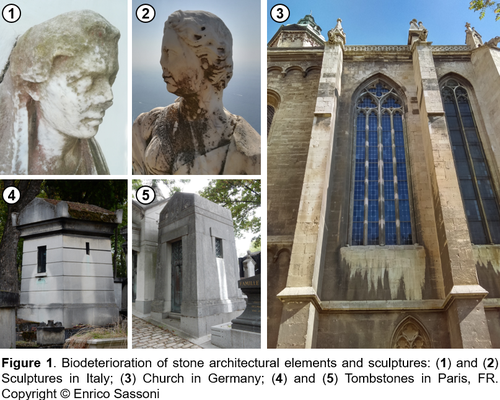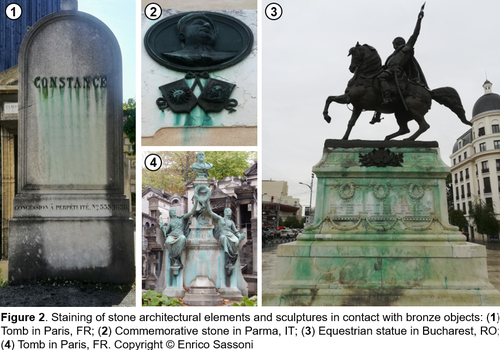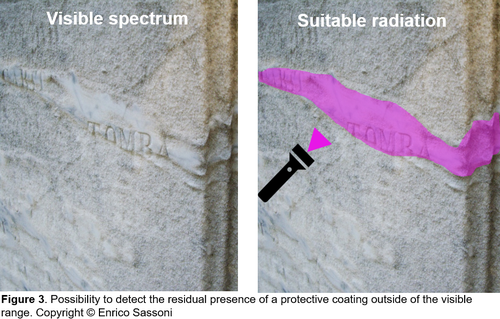OBJECTIVES
SECURE-COATS aims at solving three open issues affecting the durability of carbonate stones (such as marble and limestone) used in cultural heritage.

Anti-fouling ability
Biodeterioration is caused by microorganisms (bacteria, fungi, algae, lichens, mosses) and higher plants that cause staining by biogenic pigments, corrosion by secreted acids, and mechanical stress (Figure 1). Biodeterioration accounts for 30% of cultural heritage degradation and is expected to be worsened by future climate change. Already restored monuments may actually have increased susceptibility to biodeterioration, as some microorganisms degrade polymeric coatings.

Anti-stain ability
Stones in contact with bronze/copper elements often show green stains (Figure 2). This is a result of copper ions leaching by rain from bronze/copper parts, followed by rainwater percolation on the stone and formation of green malachite.

Self-diagnostic ability
For artworks exposed outdoors, the possibility to assess quickly and non-destructively the presence of a surface coating (Figure 3) would be essential to assess:
- in the long term, whether the coating is still present or the substrate is again exposed to the aggressive environment;
- in the short term, whether the coating is being applied correctly (homogeneous distribution and thickness).